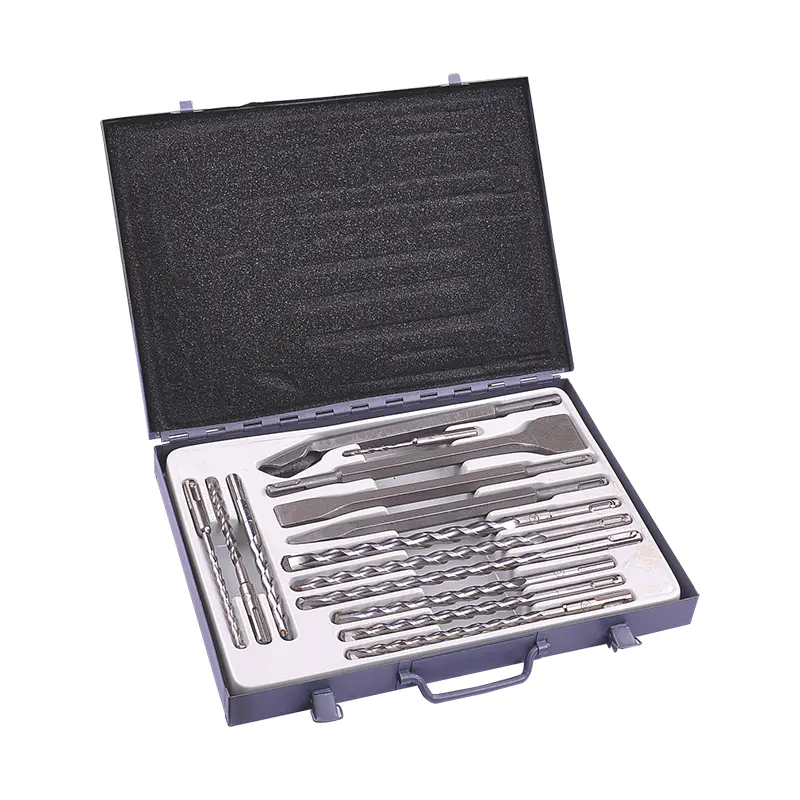2025-09-12
Drilling glass presents unique challenges due to its brittle nature and varying thickness. Achieving precise holes without cracking or chipping requires a tool that combines both hardness and toughness. A Glass Drill Bit is specifically designed to meet these demands, but the question arises whether its material properties allow it to effectively drill through glass of different thicknesses. Understanding the relationship between hardness, toughness, and glass thickness is essential for both professional craftsmen and hobbyists to ensure accuracy and safety during drilling operations.

The Importance of Hardness in Drilling Glass
Hardness is a critical factor for cutting through glass surfaces. A drill bit must be hard enough to penetrate the smooth, often tempered surface without becoming dull or deformed. Commonly, glass drill bits are made from tungsten carbide or diamond-coated materials, both of which provide good hardness. This enables them to maintain sharp cutting edges even when applied to thick or toughened glass. High hardness ensures that the drill bit can grind through the surface without slipping, reducing the risk of uneven holes or surface damage.
Toughness and Resistance to Chipping
While hardness allows the bit to cut, toughness determines its ability to withstand stress without breaking. Glass is brittle, and sudden pressure or vibrations during drilling can cause cracks or shattering. A drill bit must therefore have sufficient toughness to absorb these stresses without fracturing. Tungsten carbide provides a balance of hardness and toughness, while diamond-coated bits offer extreme hardness with enhanced resistance to edge wear. The combination of these properties ensures that the bit can penetrate thicker glass while maintaining structural integrity and reducing the likelihood of breakage.
Adapting to Different Glass Thicknesses
Glass thickness significantly affects the drilling process. Thin glass, such as decorative panels or small mirrors, requires careful handling to avoid cracking from excessive force or heat. The drill bit must provide precision without applying unnecessary pressure. Conversely, thick glass, like tabletops or safety panels, demands higher cutting power and consistent durability to maintain sharpness throughout prolonged drilling. Modern glass drill bits are designed to accommodate a range of thicknesses, often with pointed tips and reinforced edges that allow controlled penetration while reducing stress on the surrounding material.
Cooling and Drilling Technique
Regardless of thickness, proper drilling techniques and cooling methods play a crucial role in improving performance. Using water or lubricant during drilling helps dissipate heat generated from friction, which can otherwise reduce hardness effectiveness and increase the risk of chipping. A slow, steady drilling speed with pressure allows the bit to gradually cut through glass, taking advantage of both its hardness and toughness. These methods are particularly important when working with tempered or laminated glass, which is more sensitive to cracking.
Practical Implications for Users
For both professional and home applications, the hardness and toughness of a glass drill bit determine its versatility and reliability. A well-engineered bit allows users to drill precise holes in glass ranging from a few millimeters to several centimeters thick without damage. This versatility is essential for projects such as glass shelving, aquariums, mirrors, and decorative installations. By selecting a drill bit with the appropriate material properties, users can achieve accurate results while reducing the risk of costly breakage or wasted material.
Balancing Hardness and Toughness for Effective Drilling
The hardness and toughness of a glass drill bit are key factors in determining its suitability for various glass thicknesses. High hardness ensures effective cutting, while sufficient toughness prevents fracture or chipping under stress. When combined with proper drilling techniques and cooling, a quality glass drill bit can perform reliably across a wide range of glass types and thicknesses. Understanding these material properties helps users make informed decisions, ensuring both precision and safety in glass drilling applications.